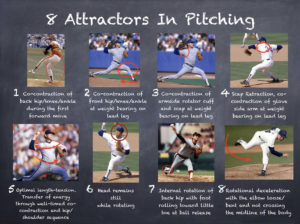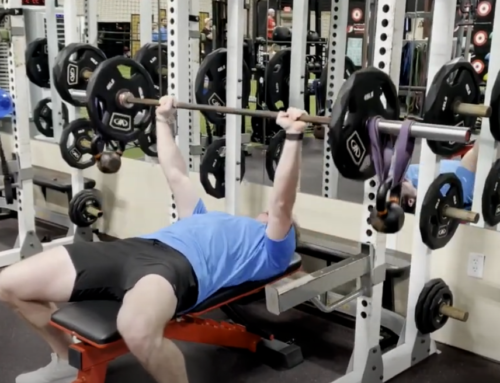
Pablo Escobar, Lucky Luciano, Al Capone, Carlo Gambino, Jessie James, John Dillinger.
What do they have in common?
They’re all notorious gang leaders — criminals who influenced their underlings to commit crimes against humanity. Say what you want about the morality of their endeavors, but In their respective hay days, they were all highly successful, and their organizations functioned efficiently. However, in all cases, changes in their business environment (i.e., attention from The FBI or Pinkerton’s), a shift in their primary task (switching from robbing to running), and/or changes in their internal organismic state (hubris, paranoia and/or insecurity) destabilized their dynamic systems which cascaded into organizational failure (phase shift).
If, one day, you decided to become an entrepreneur and started your own syndicated crime ring, I would imagine there would be lots of moving parts to manage. Even in the most well-designed, structured and disciplined organization, the incalculable number of variables and unexpected perturbations that could occur on a minute by minute basis would be mind-blowing.
Finding linear cause-and-effect relationships in such a soup of variability would be like discovering a gator riding a donkey in an Asian shopping mall.
The parallels in pitching are eery.
Our approach to assessing and improving pitching mechanics is based on Dynamic Systems Theory (DST), a motor learning precept that has emerged from research in behavioral psychology. DST uses differential calculus to define and predict the state and behavior of complex non-linear networks such as ecological systems, economies, political systems. In DST, as it relates motor learning, the body is considered a complex biological system
In DST, features of the system (movement) that must be stable and others that can be variable. The stable parts are called “attractors,” and the variables are known as fluctuations. Attractors serve to stabilize the system (the body), while the fluctuations allow for adjustability. To perform optimally, you need your attractors to be stable, but not too stable, and you need just enough fluctuations to ensure your system is robust (resistant to perturbation) and resilient (resistant to phase shift, i.e., tissue failure).
We use three simple criteria to identify attractors in pitching:
1) If a lot of superb (hall of fame caliber) players execute a component of a movement similarly, that part of the action is considered an attractor.
2) If inefficient or delayed performance would result in a timing issue (late or early), that feature is regarded as an attractor.
3) And finally, if incorrect or improper execution would put a player at increased risk of injury, that part is also considered an attractor.
As I’ve written before, we have identified seven attractors in pitching.
The first four attractors utilize co-contraction at crucial points in the movement to gather and store energy. Attractors five and six allow the athlete to transfer and direct that energy, and attractor number seven encourages safe and efficient, rotational deceleration to dissipate the energy.
In Frans Bosch’s opening presentation at the 2018 Florida Baseball ARMory/Dutch Baseball Skill Acquisition Summit, he declared that identifying unstable attractors, then designing training experiences to challenge and stabilize those attractors, could be a coach’s most important role. To further clarify, Frans added this insightful anecdote. “Find the gang leader attractor, stabilize it, and watch the remaining dominos fall into place.”
In our analysis of the pitching motion, the “gang leader” is known as “The Back-Leg Attractor,” or the first move. If the first move goes awry, the body is forced to choose from one or all of four different compensatory moves to get back on track. The four most common first move errors that destabilize the back-leg attractor are:
1) Immediately collapsing the back leg. (The knee gives way and projects forward of the back toe).
2) Failure to fully engage the back leg (tall and fall, or “up down and out” mechanics).
3) Counter Rotation (turning both buttocks and jersey number toward the catcher).
4) Shifting the weight to the ball of foot prematurely (heel comes off the ground, creating quad dominance).
When a pitcher demonstrates one or more of these inefficiencies two things can happen. The quads can become dominant over the glutes creating imbalances and muscle slack, or he can create a centrifugal, east-west rotation. Either situation has the potential to project the athlete toward the on-deck circle on his arm side. When the first move produces a directional problem, the athlete is forced to choose one or more of the following compensatory fluctuations to get his energy re-directed toward home plate,:
1) Open his lead leg prematurely and independently, disconnecting his pelvis and dragging his torso open too soon
2) Pull hard with his glove sidearm, disrupting the optimal length-tension relationship in his abdominals and chest muscles
3) Open his torso early, releasing the elastic tension he needs to transfer energy from his lower body to his arm
4) Aggressively tilt his trunk toward his glove side, again disrupting the optimal length-tension relationship in his abdominals and destabilizing his spine.
Many coaches would view these disconnections as independent errors in movement that require an immediate correction. That approach is wrong. Make no mistake, every member of this gruesome foursome can be a ruthless, evil robber of velo, command, and arm health. But by themselves, they’re small-time criminals. They’re the “muscle,” not the “brains” of the organization. When you trace them back to the source, all evidence points to the gang leader, the back leg attractor as the most influential force in the mob.
To put it another way, if the system is an illness like the common cold or the flu, the aforementioned disconnections are merely the symptoms – the runny nose and the cough. The Back-Leg Attractor is the virus. He’s the gang leader!
Get him stable, and there’s only one direction for the athlete to go — directly toward home plate. When the first attractor is stable, downstream fluctuations are minimized and the entire system becomes more robust and resilient. As the bandwidth of the errors decreases, overall performance improves.
How do you get the Back-Leg Attractor stable?
Ironically, you do it by making the back leg more unstable.
Just like the instability of those infamous crime syndicates, when training pitchers, you can manipulate 3 types of variables to destabilize the system.
You can change the environment, the task, or the organism.
For example, you can use instability from above with water-filled devices and/or unpredictable perturbations.
You can also use high-speed movements that promote co-contraction, hip hinging and hip locking (either in the gym or during throwing drills). These types of training experiences force the athlete to choose more efficient pathways and demand steady attractors.
You can add variability by changing the slopes of the mounds or by alternating randomly from flat ground to mound, from grass to dirt, etc.
You can feed the mistake by looping an elastic band around his torso and unpredictably pulling him toward his arm side during his throwing motion. This will accentuate his quad dominance and force him to activate opposing muscles. His body will subconsciously pull his butt back over his heel, thereby improving the stability of the back leg attractor.
Or, you can create organismic variability by inducing back leg fatigue with exercises like pistol squats and lunges prior to throwing. (We actually use this one more in hitting than in throwing, out of concern about injury risks when throwing while fatigued).
Find the gang-leader and destabilize him. Create training experiences that encourage self-organization. Get the gang leader stable and watch the downstream dominos fall into place.
Sounds like a good plan.
Get started by calling, our CFO/COO Amy, at 866-787-4533.
We’ll see you at The ARMory.

Randy Sullivan, MPT, CSCS CEO, Florida Baseball ARMory





